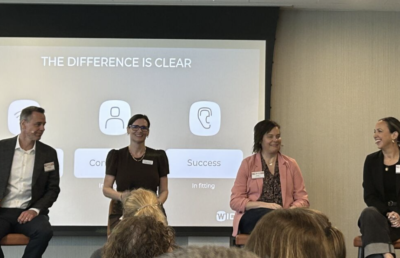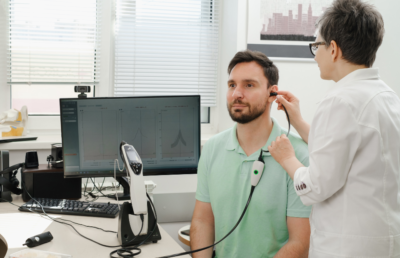Did you know that in the United States, about 16% of people report hearing problems? If you’re running a website, you want as much traffic on it as you can get. However, if your website isn’t accessible for those with hearing impairment, you’re excluding about 16% of your potential audience. Ensuring that people with hearing loss are able to effectively navigate and understand your website is not difficult. Here’s what you need to know.
Provide multiple contact options
One of the main goals of a website is to increase conversions and, ultimately, sales. However, many websites only provide a phone number because it’s a quick and easy way to get in touch. To make your website and business as accessible as possible for people with a hearing impairment, be sure to provide them with a variety of contact options such as email, online forms, or a live webchat.
Subtitle and caption videos and clips
Short videos are really popular these days, so it’s a good idea to include them on your website. However, if they’re not subtitled and captioned, people with hearing loss simply cannot watch them. The difference between subtitles and captions is that while subtitles only show what’s being said in the video, captions include descriptions of what is happening in the video as well. Subtitles assume that the viewer either doesn’t understand the language or is in a noisy environment but can hear sounds like a car horn or a ringing phone. Captions note all significant audio events in the video as well such as song lyrics, laughter cues or the sound of applause so that deaf or hearing-impaired people can still understand what’s going on. They make it possible for them to experience the video the way it’s meant to be experienced.
You can use automated tools to create subtitles and captions for your videos, just be sure to always review and edit the result as while they are normally accurate, sometimes these tools make mistakes.
Provide a summary of audio and video content
A brief summary of what a video is about on your website can be just as important as captions or a transcript. A video’s summary may be as simple as a list of topics or songs that the video includes, which is similar to alternative text for someone with a hearing impairment.
Make navigation easy
It’s a fact that if your website is not easy to navigate and people don’t find the information they’re looking for quickly, they just leave your website and look for an alternative, which can easily be the website of your competitors. Note that people with a hearing impairment rely so much more on visual information, so pay attention to clear headlines, subheadings, paragraphs, bullet points, and on an overall clear and easy-to-follow structure of content.
Make sure that audio doesn’t play automatically
Such a simple setting can mean a lot to people with a hearing impairment as they may have a hard time gauging how loud videos or audio clips are, especially when they play automatically and out of the blue. This can get them into an embarrassing situation. So try to avoid playing audio automatically, but if it’s unavoidable, make sure that users have an easy way to turn it off.
When it comes to your website’s accessibility, just a little bit of extra effort goes a long way. If you keep people with a hearing impairment in mind when structuring your website, you open the doors for a bigger pool of potential visitors to it.
For more tips on hearing health, browse our blog.





